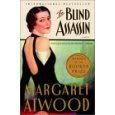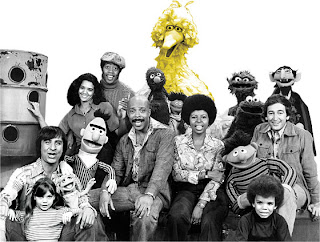 A little while ago, there was a Facebook thing (I don’t know what else you call them) asking people to name their fifteen favourite/most influential writers. I posted mine and a female friend (I use friend here in the sense of someone I actually talk to, visit etc rather than a Facebook Friend) observed of mine, “You need to read more female authors.”
A little while ago, there was a Facebook thing (I don’t know what else you call them) asking people to name their fifteen favourite/most influential writers. I posted mine and a female friend (I use friend here in the sense of someone I actually talk to, visit etc rather than a Facebook Friend) observed of mine, “You need to read more female authors.”
All fifteen of mine were male. True, Lee Harper was a writer who popped to mind moments after I posted the list and in the days following I remembered some female writers I had read (e.g. Jane Austen, E. Annie Proulx, Enid Blyton, Ayn Rand (urgh!)) but in all honesty, there are not that many female writers whose work I follow. My friend sent me a list of writers to check out. The name that struck me strongest was Margaret Atwood, an author who is on my list of ‘I really must read … one day’. So the day had arrived and I dutifully (if eventually) took to the library to borrow a Margaret Atwood novel.
 The one I chose was The Blind Assassin. I loved the title and the cover, a 1930s advertising portrait of a woman. The book starts with the death of Laura Chase, the author of ‘The Blind Assassin”. Laura’s book is the story of a man and a woman, secret lovers, always on the move. Why they are on the move is a mystery and he tells her science fiction stories that he later writes up for pulp fiction magazines. ‘The Blind Assassin’ has stories within the story that is within The Blind Assassin. Along with excerpts from Laura’s book, we get newspaper accounts of tragedies befalling a family, and the memoirs of Laura’s older sister Iris, writing in modern times. As Atwood’s book continues, all these strands come together in a satisfying and moving way.
The one I chose was The Blind Assassin. I loved the title and the cover, a 1930s advertising portrait of a woman. The book starts with the death of Laura Chase, the author of ‘The Blind Assassin”. Laura’s book is the story of a man and a woman, secret lovers, always on the move. Why they are on the move is a mystery and he tells her science fiction stories that he later writes up for pulp fiction magazines. ‘The Blind Assassin’ has stories within the story that is within The Blind Assassin. Along with excerpts from Laura’s book, we get newspaper accounts of tragedies befalling a family, and the memoirs of Laura’s older sister Iris, writing in modern times. As Atwood’s book continues, all these strands come together in a satisfying and moving way.
I really enjoyed this book. I followed my pattern of reading books I love by devouring early chapters, and lingering over the last few, avoiding reading the book so I would not finish it so quickly. As the book draws to a close, you may find yourself flipping back to the beginning, as I did, looking for what you missed the first time. My description of the book may make is sound difficult, but it is immensely simple and pleasurable to read.
I don’t know why I haven’t read more female authors. There was a time when there were fewer around but that was sometime ago, and today they are legion. I've never avoided a book because it was written by a woman, and I'm sure there are books I've read of which I cannot recall the sex of the author. I did read a few books by women that re-imagined classic female characters e.g. Rebecca, Morgana le Fay and Medea. All these books turned these diverse characters into the one: a sexually- confident, liberated, very modern woman. It was as if we re-imagined Hamlet, Beowulf or David Copperfield as a sexually confident, liberated and very modern man: unlikely and dull.
 Still, the failings of a few authors working in one genre should not have put me off the entire gender. I do have a hard time picking up modern novels by anyone, worried that they will be all technique and no story. And many books do appeal to one sex over another. I discussed my failure to get through Madame Bovary with this same female friend and she said, “I think that’s more of a woman’s book.”
Still, the failings of a few authors working in one genre should not have put me off the entire gender. I do have a hard time picking up modern novels by anyone, worried that they will be all technique and no story. And many books do appeal to one sex over another. I discussed my failure to get through Madame Bovary with this same female friend and she said, “I think that’s more of a woman’s book.”
So why I have this curious failing is open to discussion, if you are so inclined. In the meantime, Sophie, I am hooked on Margaret Atwood; The Handmaid’s Tale will be my next one, I think.










